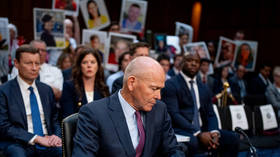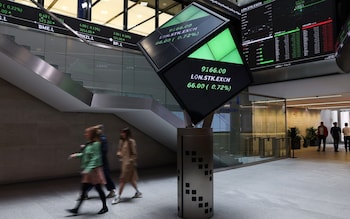DUBAI, United Arab Emirates (AP) — As Iran’s runoff presidential election nears, comments by an official in the campaign of reformist Masoud Pezeshkian raised the possibility of his government increasing government-set gasoline prices — a move that has sparked nationwide protests in the past.
While still tentative, economists long have warned Iran needs to overhaul its system of subsidies, estimated to cost the Islamic Republic tens of billions of dollars a year. In 2019, a similar hike triggered mass demonstrations and a bloody crackdown that grew even more intense after the 2022 protests over the death of Mahsa Amini.
On Saturday, Pezeshkian campaign head Ali Abdolalizadeh told journalists that his possible presidency would see price hikes for fuel and other items handled without any outcry.
“Don’t worry, petrol at any ... price, you will see that it would be allowed with calmness and cooperation by the people,” Abdolalizadeh said.
Hard-liners immediately accused Pezeshkian of planning to increase fuel prices by a factor of eight. Pezeshkian’s camp claimed the price under Saeed Jalili, a former nuclear negotiator Pezeshkian is facing in Friday’s election, would be 12 times higher, based on remarks by those close to the hard-liner. That official, Majid Karimi, suggested Iranians should be paying the “world price” at the pump.
People gathered at a Jalili rally carried a sign warning against any price hike, saying: “We do not want petrol at price of 250,000 Rial” a liter. That would be 40 cents a liter, or $1.55 a gallon.
Over 50 countries go to the polls in 2024
- The year will test even the most robust democracies. Read more on what’s to come here.
- Take a look at the 25 places where a change in leadership could resonate around the world.
- Keep track of the latest AP elections coverage from around the world here.
But no matter who is elected, it is likely Iran will see fuel price hikes.
Iran raised minimum gasoline prices by 50% to 15,000 rials per liter in 2019 — or 12 cents a liter, or about 50 cents a gallon. But with Iran’s currency crashing since then, that’s now 2 cents a liter, or 9 cents a gallon. After a monthly 60-liter quota, it costs 30,000 rials a liter. That had been nearly 24 cents a liter or 90 cents a gallon then, but now is nearly 5 cents a liter, or 18 cents a gallon. By comparison, an average gallon of regular gas in the U.S. costs $3.50, according to AAA.
Iran spent $52 billion on oil subsidies in 2022, according to the Paris-based International Energy Agency, the most of any country in the world. Iran spent 36% of its overall gross domestic product, or $127 billion, that year on oil, electricity and natural gas subsidies.
Though it costs the Iranian government tens of billions of dollars in subsidies, cheap gasoline is practically considered a birthright in the country, home to the world’s fourth-largest crude oil reserves despite decades of economic woes since its 1979 Islamic Revolution. Gasoline there remains among the cheapest in the world, in part to help keep costs low for its underemployed, who often drive taxis to make ends meet.
The 2019 hikes led to demonstrations across some 100 cities and towns across Iran, with gas stations and banks burned down. The crackdown that followed included at least 321 people killed, according to Amnesty International. Thousands were detained.
During the 2022 protests over the death of Amini, after she was arrested for wearing her hijab not to the liking of security forces, over 500 people were killed and 22,000 locked up — part of a pattern of widening unrest in the Islamic Republic.
On the streets of Tehran, people have grown increasingly anxious about the price of fuel rising.
“Do you know what that means? I may buy fuel to set fire to everything,” said taxi driver, Rasoul Kashani, 45. “I will not vote at all. Both plan to slaughter ordinary people.”
Shahrooz Imani, a 41-year-old mother of three, said she planned to vote for Jalili as she believes he cares more about the poor given Pezeshkian’s apparent plan to raise prices.
“This will deprive us of our daily needs — even vegetables and bread — if price of fuel hikes up,“ she said.
A bookseller on Tehran’s famed Enghelab — or “Revolution” — Street also worried about the poor.
“We cannot tolerate this again, maybe we need to flee to neighboring countries to work,” said Abbas Irani.
Mahdi Robati, a business analyst and CEO of an Iranian brokerage firm, warned that Jaili’s economic policies and hard-line positions could bring about economic damage on the scale of China’s Mao Zedong.
“The output of this thinking is the complete destruction of the rial, the spread of absolute poverty throughout the country, the deprivation of all political and social freedoms, famine and the complete couponization of the economy, and many other nightmarish consequences,” he wrote on the social media platform X.
___
Karimi reported from Tehran, Iran.
Over 50 countries go to the polls in 2024
- The year will test even the most robust democracies. Read more on what’s to come here.
- Take a look at the 25 places where a change in leadership could resonate around the world.
- Keep track of the latest AP elections coverage from around the world here.
Disclaimer: The copyright of this article belongs to the original author. Reposting this article is solely for the purpose of information dissemination and does not constitute any investment advice. If there is any infringement, please contact us immediately. We will make corrections or deletions as necessary. Thank you.



